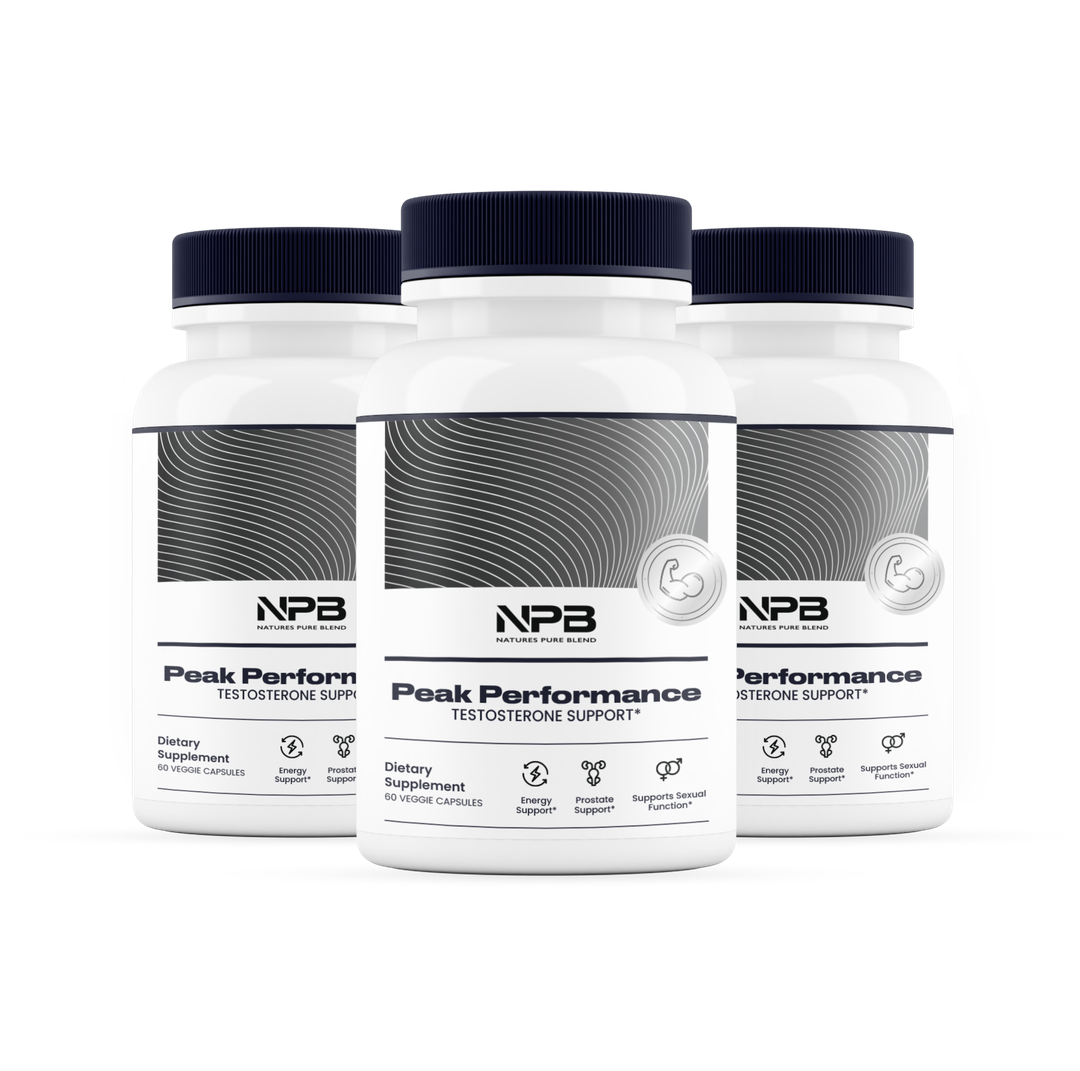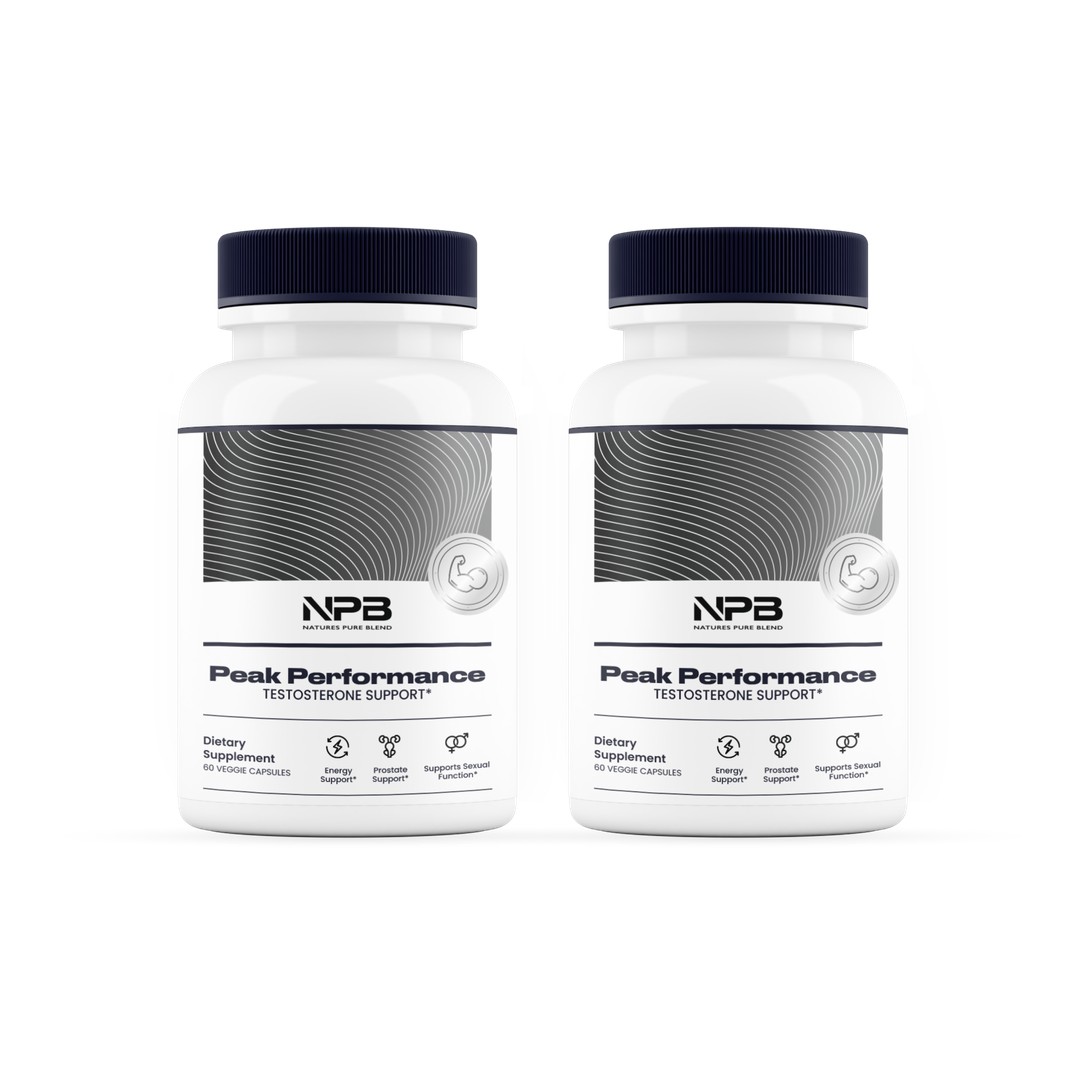Get Free Shipping On Orders $99+
8 Main Reasons You're Losing Testosterone
Testosterone is the engine behind your vitality. It fuels muscle growth, mental sharpness, motivation, and sexual performance. But for millions of men, testosterone starts falling earlier and faster than it should.
If you're feeling slower, softer, or less like yourself, it’s not just age. Everyday habits, foods, and exposures might be sabotaging your T levels.
Here are the 8 biggest culprits behind the drop — and how to take back control.
1. Aging
Testosterone naturally declines with age — starting around 30, most men lose about 1% per year. But today’s men are showing low levels decades earlier than their fathers.
Why? It’s not just age anymore — it’s stress, toxins, diet, and sleep. 1
What to do: Support your body with nutrient-rich foods, strength training, and hormone-supportive routines to slow this decline.
2. Chronic Stress
When stress rises, cortisol rises — and testosterone falls. Long-term stress disrupts your entire hormonal axis, limiting how much testosterone your body can make.
You might not even notice the stress until your body starts showing signs: fatigue, irritability, low sex drive. 2
What to do: Practice stress management daily — even 10 minutes of breathing, sunlight, or time outdoors can help bring cortisol down.
3. Poor Sleep
Testosterone is produced during deep, restful sleep. Even one night of poor sleep can reduce your levels the next day.
Over time, chronic sleep deprivation leads to hormone resistance — where your body no longer responds to testosterone the way it should. 3
What to do: Prioritize quality sleep. Stick to a consistent bedtime, cut off screens early, and avoid alcohol or heavy meals at night.
4. Processed Foods & Sugar
Highly processed carbs and sugars spike insulin and drive inflammation, both of which block testosterone production.
They also encourage fat gain — especially belly fat — which converts testosterone into estrogen. 4
What to do: Focus on whole foods, lean proteins, healthy fats, and greens. Cut processed snacks and sugary drinks wherever you can.
5. Sedentary Lifestyle
Your body was built to move. Testosterone thrives when muscles are challenged — especially through strength training and short bursts of high-intensity movement. When movement stops, testosterone follows. 5
What to do: Aim for 3–4 days a week of resistance training. Even walking daily can help shift hormones in the right direction.
6. Excess Body Fat
Fat cells contain the enzyme aromatase, which converts testosterone into estrogen. More body fat means more estrogen — and less testosterone.
It’s a vicious cycle. The more estrogen you make, the harder it becomes to build muscle or lose weight. 6
What to do: Focus on fat loss through clean eating, strength training, and quality sleep. Even 5–10 pounds of weight loss can have a big impact on T levels.
7. Endocrine Disruptors (Toxins)
Plastic containers, canned foods, non-stick cookware, air fresheners, and personal care products often contain BPA, phthalates, and parabens — chemicals that mimic estrogen and block testosterone. These aren’t rare. They’re in your shampoo, your receipts, and even your water bottles. 7
What to do: Use glass or stainless steel. Choose natural or unscented personal care. Avoid heating food in plastic containers.
8. Nutrient Deficiencies
You need certain vitamins and minerals to make and use testosterone effectively — especially:
-
Zinc – boosts production
-
Magnesium – increases free T
-
Vitamin D – directly linked to T levels
Even small deficiencies can disrupt hormone balance and energy. 8
What to do: Get your levels tested. Focus on a nutrient-dense diet, or consider targeted supplementation under professional guidance.
Final Takeaway:
Testosterone isn’t just about age — it’s about environment. Your daily choices either protect your hormones or push them out of balance.
If you’re feeling drained, soft, or less like yourself — it’s time to investigate what’s behind the drop. Most of these causes are fixable with simple shifts in your daily routine. Take care of your testosterone… and it will take care of you.
Support Sex Drive, Testosterone Levels, & Muscle Mass Growth*
Join Our Community Of Health Lovers & Get Special Deals
Receive study-backed health tips, exclusive email deals, and more.
†Disclaimer: These statements have not been evaluated by the Food and Drug Administration. These products are not intended to diagnose, treat, cure or prevent any disease. Product results may vary from person to person.



